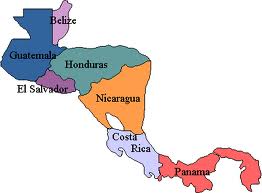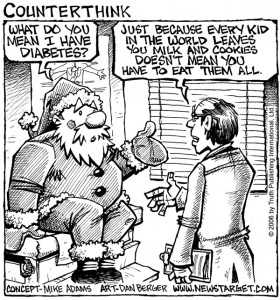Introduction
Diabetes is a disease that is widely known in the United States. Our healthcare system has identified the importance of early intervention and prevention. Unfortunately, less developed countries are unable to keep up with the trend and provide proactive care with various diagnoses. In rural and underserved areas, access to healthcare is limited by factors decreased staffing, unavailable resources, and limited funding. Secondary to the limiting factors, screening and prevention can become difficult. Diabetes is now a manageable disease in the United States, but is not in developing countries.
In 2002, the Pan American Health Organization, an regional office of the World Health Organization, began to recognize the diabetes epidemic in Central America. In 2003, a survey was conducted in Villa Nueva, Guatemala to assess the prevalence of diabetes in this town. Of approximately 1400 individuals surveyed, researchers found there is approximately 8% diagnosed with diabetes.1 A similar survey was conducted by PAHO in 2006 and found again 8% of those surveyed were diagnosed with diabetes and 24% classified as having impaired glucose intolerance.2 There is clearly a need to address diabetes in this population, but where do we come in?

My Capstone
Diagnosing diabetes is the main target of many efforts in Central America, the progression of the disease has not been thoroughly addressed. If management improperly or without proper resources, diabetes can to lead to various serious complications. Physical foot deformities, foot ulcers, and even amputation are common complications experience with individuals with diabetes. The risk of developing such complications is astronomically higher in areas with limited resources.
I decided to frame my Capstone project around decreasing the risks of developing foot ulcers by clinical screening and patient education. I compiled the evidence on the best methods to screen for diabetic foot ulcers and develop a tool that could be used in area with limited resources. During my search, I choose five resources and merged the information to come up with the Foot Ulcer Risk Examination tool. Click here for list of referencesThis is a basic tool that utilizes a short clinical examination and patient history to stratify individuals into a risk category. Once level of risk is determined, there are specific follow-up actions suggested to ensure proper management of the individual’s status. The follow-up process is described in the flowchart.
Foot Ulcer Risk Examination tool:Foot Ulcer Risk Examination tool [English]
Foot Ulcer Risk Examination [Spanish]
Flowchart:Flowchart [English] Flowchart [Spanish]
In addition to a clinical screening, I developed patient education materials to assist individuals with regularly checking their feet. The inside flaps of the brochure contained detailed information on “how to check your feet” and all information is summarized briefly in a checklist. Developing culturally relevant materials was the most difficult aspect of this project. Being unfamiliar to the lifestyle and cultural in Guatemala I tried to create something that was culturally neutral, but be a realistic resource for patients. My health literacy assessment score was “superior at 85%,” but since that assessment was created for English language and American cultures it may not directly correlate to the population it was created for. See attached Health Literacy Assessment form
Patient Education:Step by Step Guide to Better Foot Health [English]
Step by Step Guide to Better Foot Health [Spanish]
While in Guatemala, I will present the materials to various disciplines including physical therapists, nurses, and physicians. I hope that following my presentation clinicians will have a valuable tool and resources to aid in decreasing the prevalence of foot ulcers in their communities. I have prepared a short powerpoint presentation, but I expect to utilized a demonstration along with a question and answer session to deliver my materials. Powerpoint for Guatemala
In order to evaluate my materials, I developed two different types of evaluations. I created an evaluation and a script that allow my committee members to evaluate my work. The script was created to simulate how I would deliver the tool to the clinicians in Guatemala. My committee members were then asked to rate different aspects of the FURE tool, flowchart, and patient education material. Space was also allowed for general comments and suggestions. Some of the suggestions were determine to be very insightful and valuable, but were not addressed secondary to the limited scope of this project.
Christina Young’s evaluation and comments
Ann Chamberlin’s evaluation and comments
Lisa Johnston’s evaluation and comments
The clinicians in Guatemala will be provided a similar, but shortened version of the evaluation. Feedback from the clinicians in Guatemala will be posted after the trip.
Evaluation form for Guatemalan clinicians
- Pan American Health Organization. The Central America Diabetes Initiative (CAMDI):Costa Rica, El Salvador, Guatemala, Honduras, and Nicaragua. Division of Disease Prevention and Control Program on Non-Communicable Diseases. 2002.
- Pan American Health Organization. Survey of Diabetes, Hypertension, and Chronic Disease Risk Factors: Villa Nueva, Guatemala 2006. Washington, D.C: PAHO. 2007.



5 Responses to “Reducing Foot Ulcer Risk Through Screening and Patient Education”
gchristi
Aisha,
Your work on this project was impressive. The assessment tool appears to be quick to administer, easy to score, and easy to understand. In addition, the use of the flow chart will assist health professionals in quickly classifying patients and making appropriate desicions. The patient education handout will be easy for the patients to understand and implement on a daily basis. This information will be a great way to prevent the development of complications that occur secondary to improper foot care of patients with diabetes.
Great Job! I am excited to see this presentation!
aishaj
Thanks everyone for your comments.
@ Jennifer I am too looking forward to the comments and evaluations from the clinicians in Guatemala. I found it extremely difficult trying to put together this tool for a culture that I am unfamiliar with, but I hope that I have made it meaningful since they do have many individuals in their community with diabetes.
@ Nikki Thanks for you suggestion. Determining the score criteria for each section was very difficult. As much as I wanted to include things that I thought was relevant, I was limited to what was presented in the evidence. Though I believe that it is important to assess from the knee below, the scoring criteria in which I adopted the tool from only mentioned sensation of the foot. I hope that when completing the tool the clinician recognizes and takes note of the impairment in sensation if it is above the ankle, even if they are unable to “score it.”
Aisha
olanike
Hi Aisha,
I am so proud of you and impressed that you put together your own screening tool and I think you did a fantastic job. The tool is very easy to follow and appears to be comprehensive. I also think that the flowchart will be very beneficial for clinicians. I hope I have the opportunity to see your presentation but at least I’ll get to see your practice round. My only question about the screening tool is in regards to the skin sensation segment. You recommend assessing sensation from the knee down however the scores are only include the foot region. Therefore what if a patient has diminished or impaired sensation in the lower extremities (i.e. calf area) not including the foot, would this screen capture these individuals as well?
Overall, great project!!!
Nikki
Lisa Johnston
Aisha:
You have done a wonderful job pulling this information together and creating a product that I feel will be found to be very useful at the rural clinic in Pastores. Good job synthesizing the literature and creating user friendly materials for the medical staff and the patients.
Lisa
jkschult
Aisha,
This is great! A tool for assessment, a flow chart for decision making, and patient education materials. What a wonderful and necessary way to serve this community you all will be going to in a week! I can’t wait to here about how it goes and look at your evaluation results when you return. Have fun!
Jennifer